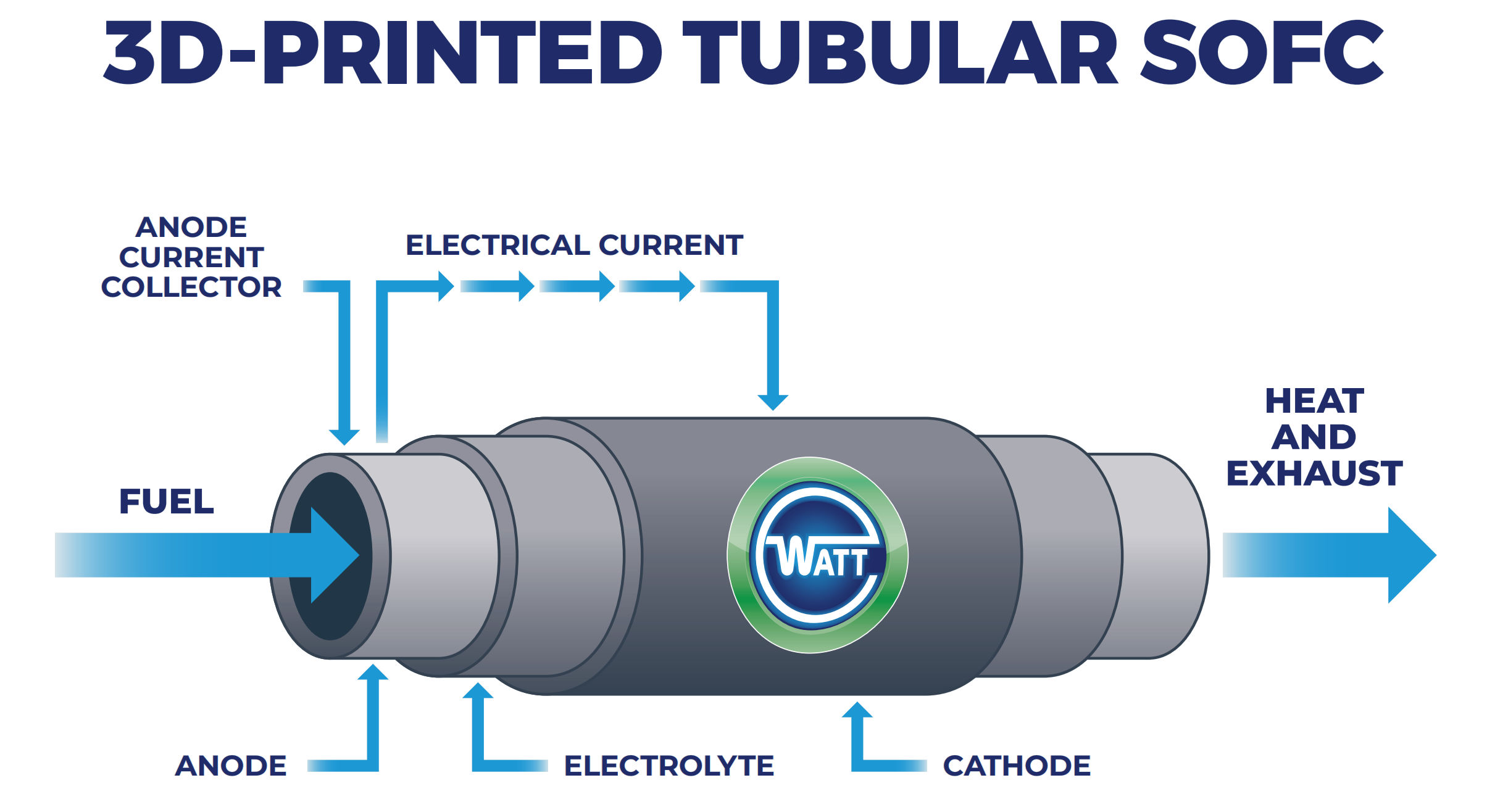WATT is a Fuel Cell.
A fuel cell is a simple electrochemical device that directly converts the chemical energy stored within fuels into usable energy. WATT’s Solid Oxide Fuel Cells (SOFCs) are ceramic-based and tubular, enabling them to thermal cycle and load follow.
SOFCs can run on natural gas, propane, renewable natural gas, and hydrogen – including blends – making fuel cells a versatile technology that can flex between available and desired fuel options.
In a fuel cell, fuel and oxygen are combined to generate electricity, heat, and water(steam):
- Fuel is delivered to the anode while oxygen goes to the opposing cathode.
- At the cathode, oxygen molecules are electrochemically reduced into oxide ions.
- These oxide ions pass through the electrolyte.
- At the anode, oxygen and hydrogen ions combine to produce water molecules.1
- Electrons are transported from the anode to the cathode through an external circuit, generating an electrical current.
1Operating on natural gas or propane, the process also yields heat and a small amount of carbon dioxide.

What are the most powerful attributes of electricity generated by WATT’s SOFCs?
-
High efficiency (far-exceeding traditional combustion engines, solar, and wind)
-
Extremely low CO2 emissions
-
Virtually zero criteria pollutants (NOx, SOx, ozone, fine particulates)

One Power Source. Unlimited Possibilities.
